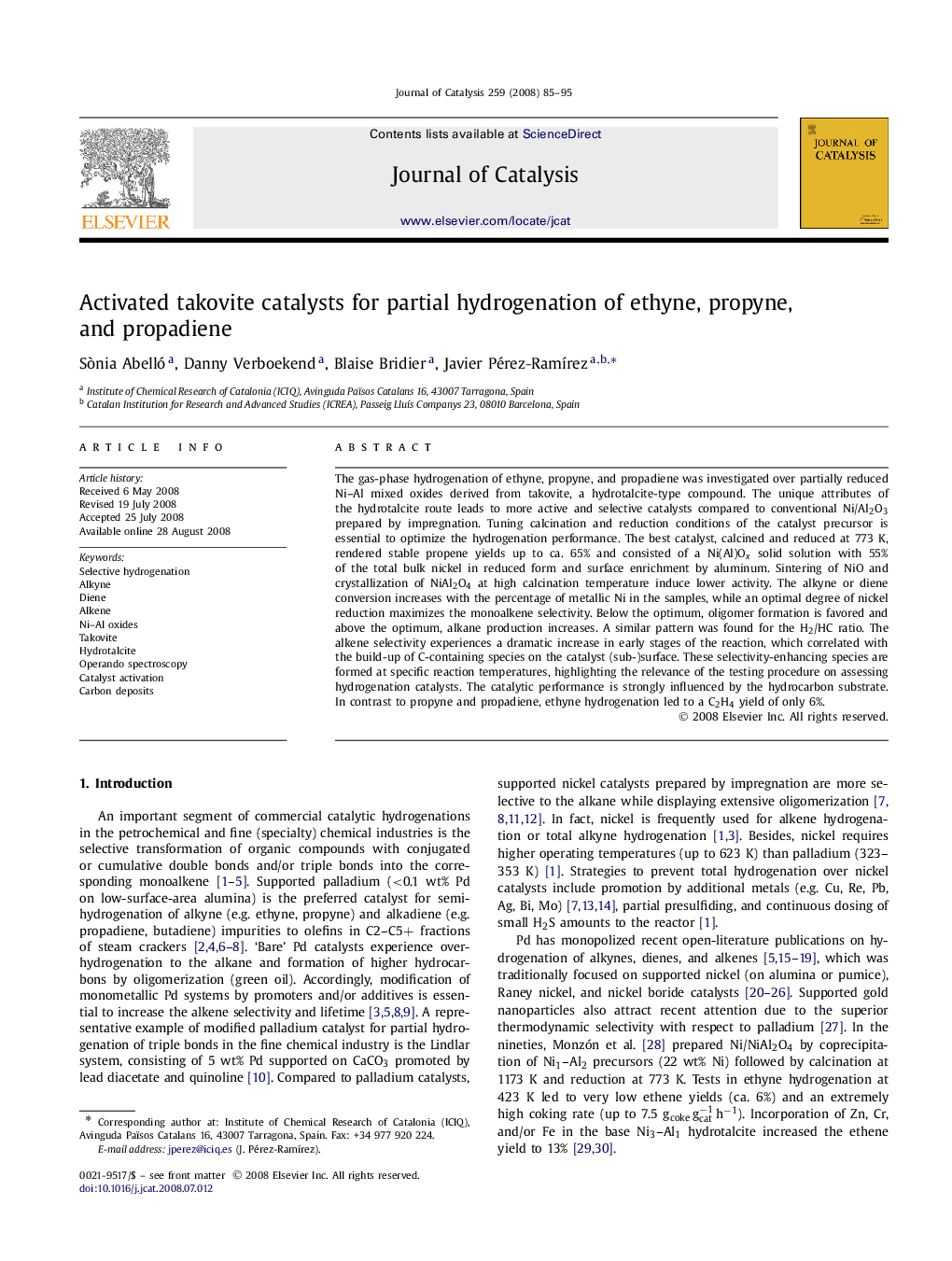| Article ID | Journal | Published Year | Pages | File Type |
|---|---|---|---|---|
| 62328 | Journal of Catalysis | 2008 | 11 Pages |
The gas-phase hydrogenation of ethyne, propyne, and propadiene was investigated over partially reduced Ni–Al mixed oxides derived from takovite, a hydrotalcite-type compound. The unique attributes of the hydrotalcite route leads to more active and selective catalysts compared to conventional Ni/Al2O3 prepared by impregnation. Tuning calcination and reduction conditions of the catalyst precursor is essential to optimize the hydrogenation performance. The best catalyst, calcined and reduced at 773 K, rendered stable propene yields up to ca. 65% and consisted of a Ni(Al)Ox solid solution with 55% of the total bulk nickel in reduced form and surface enrichment by aluminum. Sintering of NiO and crystallization of NiAl2O4 at high calcination temperature induce lower activity. The alkyne or diene conversion increases with the percentage of metallic Ni in the samples, while an optimal degree of nickel reduction maximizes the monoalkene selectivity. Below the optimum, oligomer formation is favored and above the optimum, alkane production increases. A similar pattern was found for the H2/HC ratio. The alkene selectivity experiences a dramatic increase in early stages of the reaction, which correlated with the build-up of C-containing species on the catalyst (sub-)surface. These selectivity-enhancing species are formed at specific reaction temperatures, highlighting the relevance of the testing procedure on assessing hydrogenation catalysts. The catalytic performance is strongly influenced by the hydrocarbon substrate. In contrast to propyne and propadiene, ethyne hydrogenation led to a C2H4 yield of only 6%.
